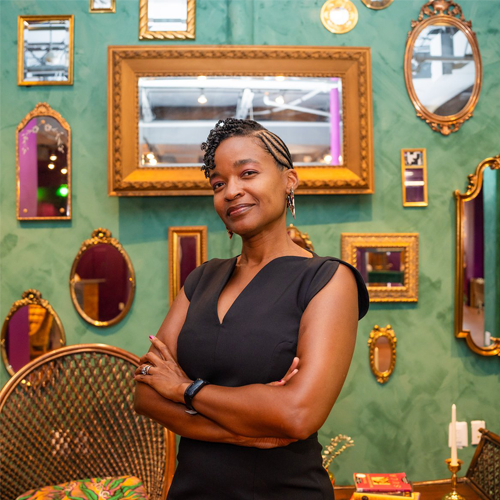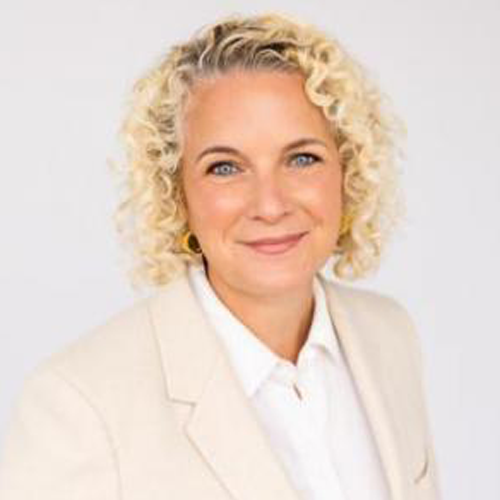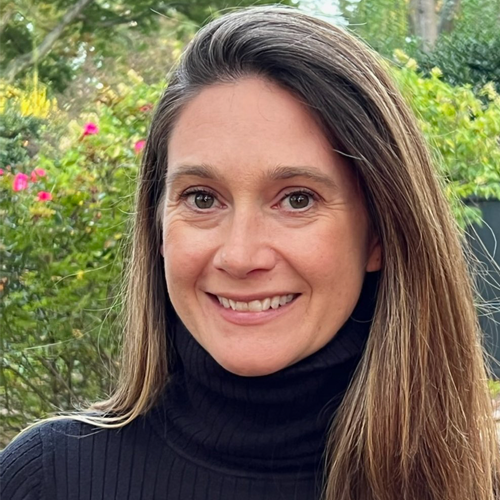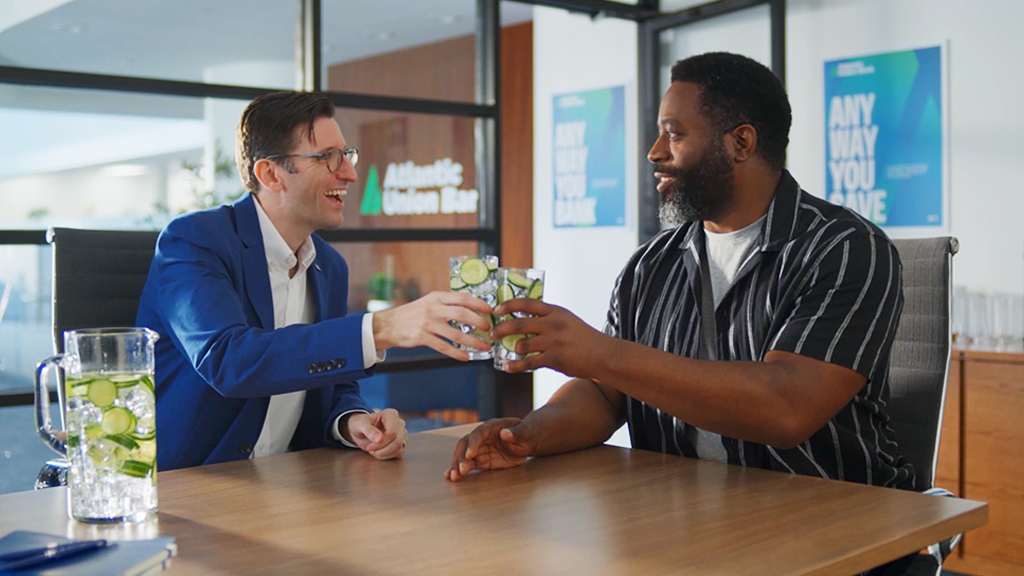
Women Leaders Making Waves in Washington D.C.
In celebration of Women's History Month, we had the privilege of engaging in insightful conversations with three remarkable women leaders in Washington D.C., each spearheading efforts to advance gender equity, diversity, and inclusion. Dr. Tamara Wilds Lawson, President & CEO of the Washington Area Women’s Foundation (WAWF), Frédérique Campagne Irwin, President and CEO of the National Women’s History Museum, and Kimberly Wallner, Senior Director of Strategic Engagement at the Women’s Suffrage National Monument Foundation, generously shared their experiences, perspectives, and aspirations.
These women exemplify resilience, dedication, and vision in their respective fields, paving the way for greater inclusivity and recognition of women's contributions. Join us as we delve into their insights, challenges, and aspirations, celebrating the past achievements and ongoing efforts to amplify women's voices in history and society.
Dr. Tamara Wilds Lawson
President & CEO, Washington Area Women’s Foundation (WAWF)
What strategies do you employ to ensure diverse voices are heard and valued within your team or organization?
Tamara: Learning and expressing curiosity about the things my colleagues value personally are simple ways to cultivate an environment where they can be their authentic selves. When starting a new leadership role, I am also intentional about observing the different ways team members add value in group settings and creating opportunities for everyone to contribute that foreground their strengths.

Who or what played a particularly important role in your journey in terms of a source of inspiration, a role model? Maybe it was a person, a book, a quotation — who or what was your North Star?
Tamara: Drs. Sheri Parks and Carol Parham were two incredible mentors at the University of Maryland, College Park during very different times in my career. Dr. Parks went above and beyond her duty as a faculty member to counsel me as a Black woman in a majority white field and institution, which was invaluable as I navigated graduate school early on. Dr. Parham modeled what healthy team leadership and staff management looked like in advance of my first nonprofit leadership role. I’m still employing strategies I learned from them and paying forward their numerous investments in me.
What’s the best piece of advice you ever received and what advice would you give to other women aspiring to leadership roles?
Tamara: Spend as much or more time identifying your professional strengths as you do focusing on growth areas. Honoring the former will help you channel your value and view working to address the latter as a necessary part of becoming a well-rounded, self-aware leader.
Executive leadership is often isolating, so find or build an external community of trusted, well-respected peers with whom you can exchange ideas and grow.
How would you like yourself or your work remembered by future generations? What is the legacy you would like to pass on?
Tamara: I hope to be remembered as a person who helped younger and emerging professionals, especially those who are underrepresented in their industries, lean into their greatness on their path to becoming transformative leaders.
What is one thing you wish more people would know about diversity and inclusion?
Tamara: I wish more people understood that DEI work is a journey (not a destination) that is ever-evolving, requiring those who value it to keep growing and re-engaging. As data, perspectives, understanding, and language expand, it’s our responsibility to update our knowledge. That enables us to bring our best-informed selves to challenging interpersonal interactions and critical decision-making at the institutional/systemic level.
Frédérique Campagne Irwin
President and CEO, National Women’s History Museum
Can you tell us about your journey to your current leadership position? What obstacles did you encounter along the way?
Frédérique: When I ran Her Corner, we worked with thousands of individual women to help them scale their businesses. As fulfilling as that was, it was a very point-to-point model, and after 10 years I realized that in that role I would never reach the volume of women and level of impact I wanted to see. Working on systems-level changes at Sorenson inspired me by imagining what change could be possible if key stakeholders came together, but I also realized that these systems are so deeply ingrained into the fabric of our culture that they would take years to change — perhaps more years than I would live to see.
And so I made a pivot to the National Women’s History Museum, where we focus on two audiences: K-12 educators (and the children in their classrooms) as well as 5- to 30-year-olds outside the classroom. This new generation believes deeply in equity and fairness. I believe that if we can get to them early enough to educate them on what women have done, are doing, and can do (which is always vastly underrepresented in textbooks around them), we can truly change the paradigm of how they see — and can help build — a more inclusive and equitable future.
What do you see as the biggest challenge for women leaders today and how can they overcome it?
Frédérique: One of the most common and meaningful successes I have seen repeatedly is what women can achieve once they believe they can.
Ask yourself for a moment at what age little boys start thinking they are physically stronger than girls, and girls start thinking boys are less vulnerable than girls — it starts around age 9 or 10. Now play that forward and see how those messages are reinforced in every other gender stereotype, cultural norm, story, and lesson we are told growing up.

When a young woman goes out into the world to do anything — run for office, launch a business, enter a STEM field, negotiate a job offer — all of that messaging surrounds not only her but everyone else around her. And it holds her down.
When I have witnessed women overcome these stereotypes or their own prescribed limitations, it is incredible. And it has deeply influenced my path to find out how to amplify that experience as broadly as possible.
What keeps you going in the face of adversity? What’s your North Star?
Frédérique: We all have days when we wonder if the work we do will actually achieve the impact we seek. But in my heart, I genuinely believe that I can contribute to a better future for all of us by working every day to advance access to what women have already achieved, are achieving today, and can achieve tomorrow.
I see a future for our country where all people who identify as women, regardless of race, class, age, or cultural background, can achieve collective advancement and be equally visible and represented in areas of economic parity, political engagement, healthcare, and education. And this keeps me inspired and motivated no matter what the day brings.
What advice would you give to other women aspiring to leadership roles?
Frédérique: One of my favorite things the Sorenson Impact Institute is working on is developing a curriculum to educate students about the impact industry, both at the University of Utah and more broadly, including through student fellowship programs and incredible experiences like SOCAP. For those who are new to their professional careers or looking to make a change, I always say that step one is to learn. See what’s going on, meet people already in the space. Then get in the pool — the world needs more people focused on impact careers, so please don’t take too long!
Kimberly Wallner
Senior Director of Strategic Engagement, Women’s Suffrage National Monument Foundation
What initiatives or projects is your organization undertaking to address the lack of representation of women and their contributions to American society?
Kimberly: In some ways we see our work as an illustration of the barriers that still exist in American society today over the value of women’s contributions to our country.
Walking the grounds of the National Mall today, you will encounter war memorials and monuments honoring civil rights heroes and past presidents. You will stand in awe of the giants who have earned their place in our national story. But what you won’t see are the great women of American history whose bravery shaped our democracy.

Of the 40 monuments, memorials, statues, and historic sites on the National Mall, 22 are dedicated to singular men. 10 are dedicated to military veterans and war history, three to foreign relations, two to private organizations, one to American’s postal history, one to America’s canal history, and one to the history of horses on the National Mall. Zero of the 40 commemorative works on the National Mall are dedicated to American women’s history. Among our most iconic monuments and memorials, American women’s stories are absent. I ask you, Where Are The Women?
Have you encountered any specific instances where your advocacy has faced resistance?
Kimberly: The story of women’s fight for the vote is the story of women’s fight to be citizens of their country — full participants in American society. This is a story that deserves telling on our National Mall but is still being looked down upon as less important because it was a movement led by women. When complete, the Women’s Suffrage National Monument will tell the diverse, inclusive, and inspiring 72-year story of the American women who lobbied, marched, picketed, and protested for the right to the ballot. It will tell the story of the suffragists who were ridiculed and threatened, arrested and beaten in their pursuit for a better America. The monument will tell the story of the women who never gave up and never gave in, and whose courage led to the ratification of the 19th Amendment in 1920 and the largest single expansion of voting rights in American history.
What is the legacy you would like to pass on to future generations?
Kimberly: Across the nation, leaders and organizations have united across industries and political parties in an unprecedented show of unity to uplift this chapter of American women’s history.
This project has the support of every living First Lady, and bipartisan and bicameral support in Congress. But still, several policymakers in the U.S. Senate don’t believe women’s history and accomplishments deserve to be uplifted in the nation’s park dedicated to sharing our national history.
As we prepare to celebrate the upcoming 250th anniversary of American democracy, I will continue to fight to weave American women into the nation’s landscape, so that my nine-year-old daughter can see herself and her history reflected in the monumental landscape and, by extension, feel valued and empowered to carry on the banner of freedom, justice, and equality for her generation.
Let's make some good.
Drop us a line


